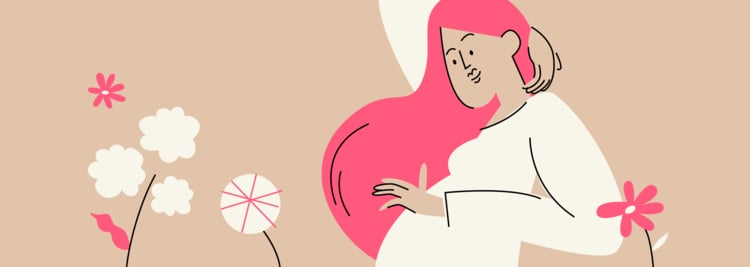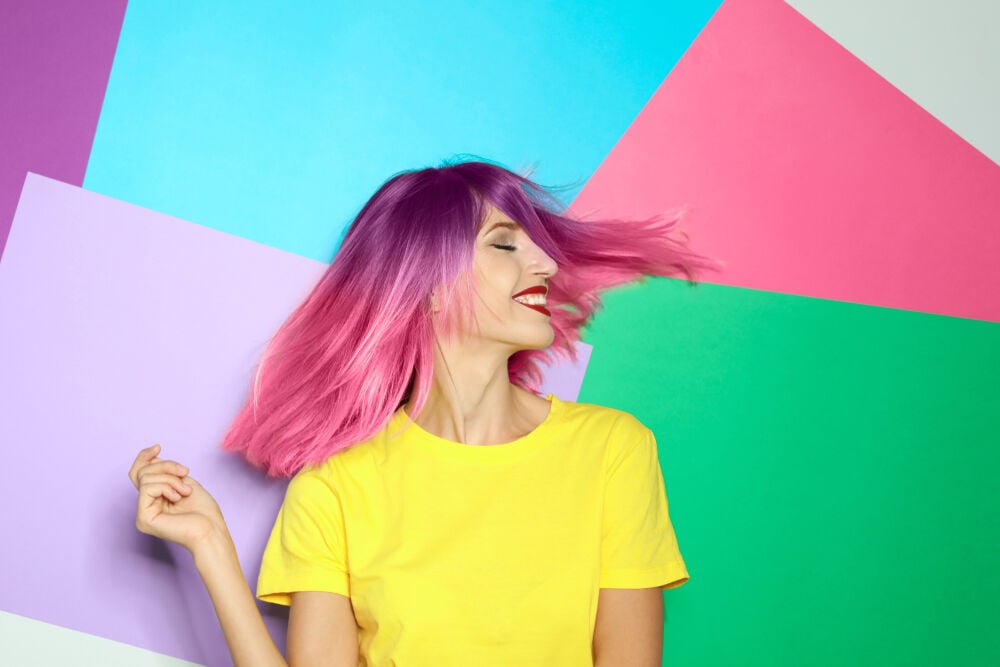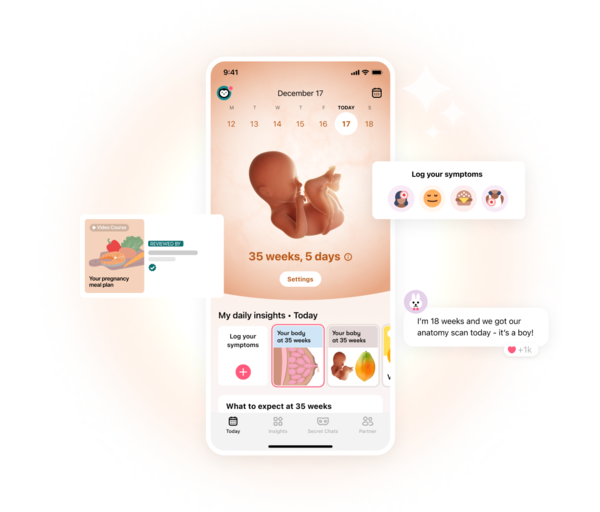Many women color their hair, whether it’s just a few highlights or a shade completely different from their own. Pregnancy and hair dyeing aren’t typically thought to be compatible, but advances in the beauty industry have made it easier to change your look during pregnancy. Read on to see what you can and can’t do with your hair while pregnant.
-
Tracking cycle
-
Getting pregnant
-
Pregnancy
-
Help Center
-
Flo for Partners
-
Anonymous Mode
-
Flo app reviews
-
Flo Premium New
-
Secret Chats New
-
Symptom Checker New
-
Your cycle
-
Health 360°
-
Getting pregnant
-
Pregnancy
-
Being a mom
-
LGBTQ+
-
Quizzes
-
Ovulation calculator
-
hCG calculator
-
Pregnancy test calculator
-
Menstrual cycle calculator
-
Period calculator
-
Implantation calculator
-
Pregnancy weeks to months calculator
-
Pregnancy due date calculator
-
IVF and FET due date calculator
-
Due date calculator by ultrasound
-
Medical Affairs
-
Science & Research
-
Pass It On Project New
-
Privacy Portal
-
Press Center
-
Flo Accuracy
-
Careers
-
Contact Us
Can You Dye Your Hair While Pregnant?


Every piece of content at Flo Health adheres to the highest editorial standards for language, style, and medical accuracy. To learn what we do to deliver the best health and lifestyle insights to you, check out our content review principles.
Pregnancy and hair dyeing
The hazardous connection between pregnancy and hair dyeing comes from the application of the color itself. A full dye job involves contact between the hair dye and the skin, which was thought to be potentially harmful to the fetus, especially in the first trimester. Most research, however, has found that the chemicals found in both permanent and semi-permanent dyes aren’t highly toxic and are safe to use during pregnancy. The small amounts of dye that may be absorbed by the scalp typically remain in the skin, making the chances of them reaching the fetus very small.
Take a quiz
Find out what you can do with our Health Assistant
Hair dyeing may not be the only beauty treatment to be concerned about if you’re pregnant. Coloring is just one of several chemical processes that women use on their hair, and each type may have an effect on pregnancy. Curling, or a permanent wave, is created by using two different solutions on the hair. The first is the waving solution, giving your curls the desired tightness, while the second acts as a neutralizer to stop the curling process.
Bleaching your hair includes the use of hydrogen peroxide and may be used in conjunction with other types of hair coloring. Finally, relaxers are used to straighten curly hair. They may be composed of lye (sodium hydroxide) or no-lye (potassium, lithium, or guanidine hydroxide) solutions.
The structure of your hair itself may also change during pregnancy, making these chemical treatments ineffective for the result you want.
These types of hair treatment may increase the risk of harmful chemicals entering your bloodstream and passing through the placenta to the baby. If you regularly bleach, perm, or relax your hair, first consult with your ob-gyn before using these chemicals on your hair while pregnant.
The structure of your hair itself may also change during pregnancy, making these chemical treatments ineffective for the result you want. While many women report that their hair is shinier, thicker, and grows faster (due to the extra folic acid they’re taking), other women experience the opposite. If you aren’t getting the proper prenatal vitamins and minerals you need, your hair can become dry, brittle, and more prone to breakage. Adding hair dye or other chemical treatments to unhealthy hair can damage it. The color also may not “take” evenly.
Depending on which treatment you use, you may wish to consult your doctor. However, there are a few ways to keep the chemical exposure to a minimum while pregnant.
Ways to minimize chemical exposure from hair dyeing during pregnancy

The things to avoid when you’re pregnant and dyeing your hair are the same precautions that you’d take when coloring your hair at any other time. Make sure to color your hair in a well-ventilated area to minimize the risk of inhaling chemical fumes. Keep a close watch on the time. Don’t leave the chemicals on your hair longer than the package indicates. Wear gloves when applying the treatment, and make sure to thoroughly rinse the color from your scalp after the process is complete.
To minimize any reactions to the hair dye that could harm you or your baby, do a patch test first, even if it’s a brand and/or color you’ve used before. Sometimes, the changes in hormones during pregnancy can affect your sensitivity to certain chemicals. You may also want to wait until the second trimester to dye your hair, and make sure to consult with your doctor.
Never dye or bleach your eyebrows. This is something that many professional colorists won’t do and isn’t safe for you to do at home. It can cause swelling in the eye area, increase the risk of infection, and possibly lead to blindness.
Consider getting highlights in your hair instead of a full color change. This ensures that the strands themselves are coated with the color, but the treatment doesn’t make contact with your scalp. You can have scattered highlights or lowlights incorporated into your existing color to mask the difference between roots and ends. Or, you can opt for an ombre color, in which a lighter dye is placed towards the bottom half of the hair, gradually transitioning from your natural color on top to a lighter one at the bottom.
To minimize any reactions to the hair dye that could harm you or your baby, do a patch test first, even if it’s a brand and/or color you’ve used before
Natural dyes, such as henna, may be another option for a subtle color. If you like the idea of being a redhead, the dark auburn notes that henna gives may be appealing. Make sure to read the labels when you’re choosing the henna — some formulas have chemicals added, so look for the pure henna variations.
Complete a patch test on your skin before putting the henna in your hair. If there is a black stain, this indicates added chemicals and you shouldn’t use the product. In addition, if you have given birth to a child who has G6DP deficiency, anemia, hyperbilirubinemia, or any blood or immune system-related disorder, then do not use henna to color your hair.
Can you dye your hair while breastfeeding?
Dyeing your hair when you’re pregnant is a slightly different thing than when you’re nursing. Breast milk typically contains the same kinds of chemicals that are in your bloodstream, including what you eat and drink. This is why doctors advise against drinking alcohol or eating very spicy foods when you’re nursing. The chemicals in hair dye are absorbed into the bloodstream in very minute amounts and will be even less present in your breast milk. Therefore, the chance of them entering the milk and posing a risk to an infant are unlikely.
If you choose to color or otherwise treat your hair while breastfeeding, take the same precautions you would while pregnant, including following the directions closely, using a well-ventilated room, and doing an allergic reaction patch test.
The takeaway
Pregnancy and hair dyeing don’t have to be mutually exclusive. With a little research, you may discover a number of options for a new color or style. Before putting any kind of color or chemical treatment on your hair, though, make sure to bring the box or a list of the ingredients and an outline of the treatment process to your doctor for approval. If you still have concerns, wait to color or treat your hair until the second or third trimester or until after you’ve had your baby.


Hey, I'm Anique
I started using Flo app to track my period and ovulation because we wanted to have a baby.


The Flo app helped me learn about my body and spot ovulation signs during our conception journey.


I vividly
remember the day
that we switched
Flo into
Pregnancy Mode — it was
such a special
moment.
Real stories, real results
Learn how the Flo app became an amazing cheerleader for us on our conception journey.
References
History of updates
Current version (04 January 2021)
Published (03 December 2019)
In this article

Get your personal guide to pregnancy with the Flo app
-
Follow your baby's growth week by week
-
Get expert info on symptoms, safe foods, and more
-
Chat with other parents-to-be




